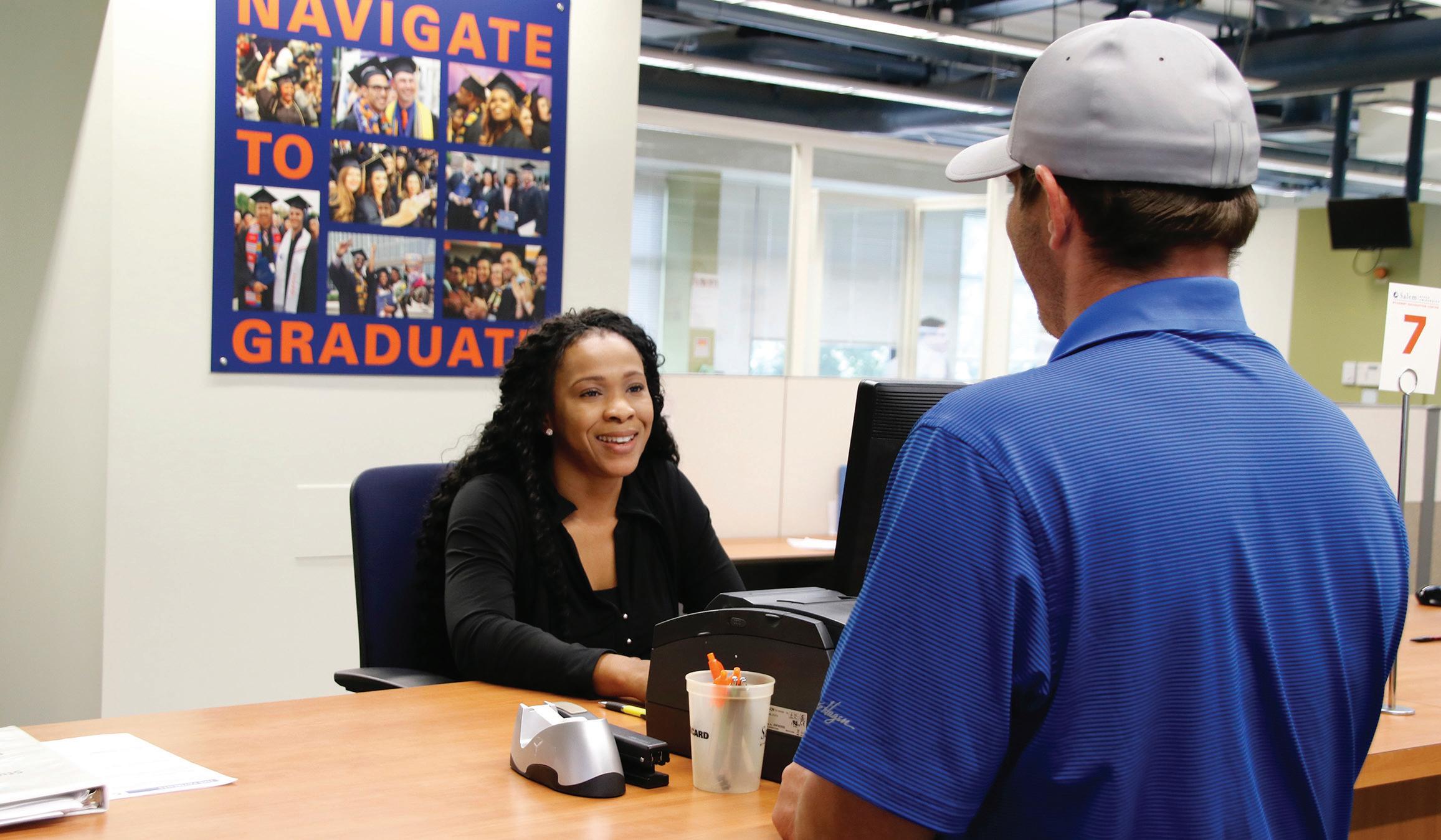
2 minute read
A Lifeline for Vikings
The Student Navigation Center Knows the Power of Philanthropy
With an average of 70,000 student touchpoints each year, the Salem State Student Navigation Center exclusively focuses on serving students’ needs. The center’s multilingual team guides students on all aspects of the college experience—from course enrollment and communication skills to financial support.
In recent months, the COVID-19 pandemic has made the center’s financial aid efforts even more vital. Many students have lost their jobs because of the shutdown, or their households have been sidelined by the virus. “Our number of student interactions is trending even higher now because of the pandemic,” says Evelyn Almeida, assistant director of the Student Navigation Center, who also administers the Student Emergency Fund. “For so many families, both the student and parents have lost their jobs. Some were already on a razor-thin financial margin before the crisis hit.”
In addition to emergency funds, the Student Navigation Center sees how other forms of philanthropic support for scholarships and programs can transform a student’s trajectory.

Student Navigation Center team members are available to answer questions and assist Vikings with the business of being a student.
“Students come to Salem State from all backgrounds and levels of educational experience—including many firstgeneration, nontraditional and diverse households,” says Carol Ampey-Sullivan, student services specialist. “Some are making it through college entirely on their own. Often, scholarships are the necessary lifeline that places higher education within their reach.”
Last year alone, Salem State distributed more than $593,061 in scholarships to 242 students—all funded by generous donors to the university.
“The funds students receive through scholarships literally make dreams come true,” says Bryan Boppert, associate director of the Student Navigation Center. “Many of our students are hard-working individuals who take on a few different jobs to pay for their education—but working too much can hinder their academics. Scholarships give students the ability to focus more on learning and borrow less in loans, which sets them up to do well later in life.”
For example, Bryan recalls how an alumna’s scholarship paved the way for her to obtain an advanced degree.
“Thanks to donors, the student’s scholarship dramatically reduced her overall loan debt and allowed her to pursue her dream of obtaining a master’s degree. Today, she works in higher education and gives back to students who were like her. Her story came full circle.”








